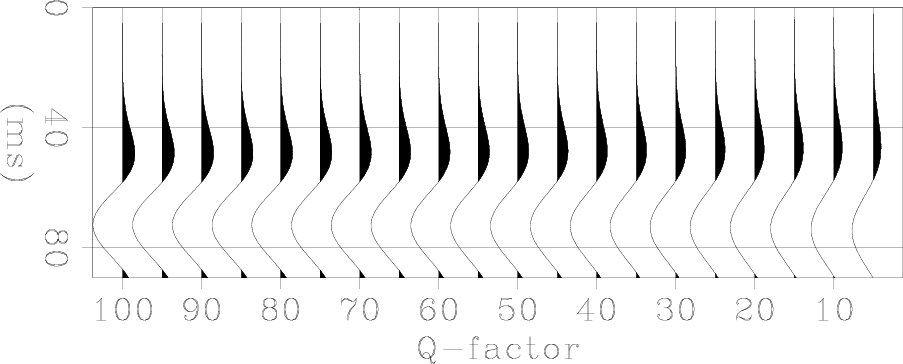|
|
|
|
Transmission effects of localized variations of Earth's visco-acoustic parameters |
A problem with using the linearized wave equation for Newtonian fluids is the acausality, which was observed as negative time shifts in some of our test cases (see Figure 1). Those time shifts, however, are extremely small and can be observed only after dense resampling, which is unreasonable considering the accuracy of our numerical modeling. For this study, only the time shifts of the maximum absolute amplitude are considered.

|
|---|
|
avpwiggle
Figure 1. Distortions of a wavelet after passing an absorption anomaly. The amplitude drop as a function of Q-factor is accompanied by a wavelet stretch and a shift of the zero crossing. [CR] |
|
|
|
|
|
|
Transmission effects of localized variations of Earth's visco-acoustic parameters |